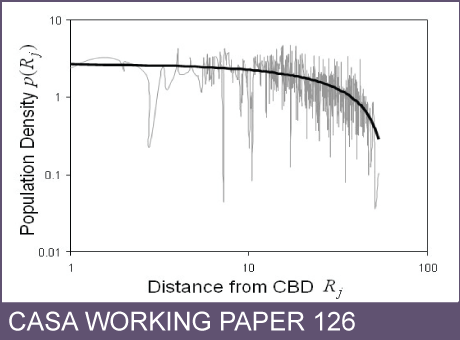CASA Working Paper 126

1 December 2007
Scaling and Allometry in the Building Geometries of Greater London
Many aggregate distributions of urban activities such as city sizes reveal scaling but hardly any work exists on the properties of spatial distributions within individual cities, notwithstanding considerable progress on their fractal structure. We redress this here by examining scaling relationships in a world city using data on the geometric properties of individual buildings. We first outline Gibrat's (1931) model which gives rise to lognormal distributions and show how we use power laws to approximate their form. We illustrate this for population densities in Greater London and we then extend this analysis to allometric relationships between buildings in terms of their different geometric size properties.
We present some preliminary analysis of building heights from the Emporis database which suggests very strong scaling in world cities. The data base for Greater London is then introduced and we extract 3.6 million buildings whose scaling properties we explore. We then examine key allometric relationships between these different properties illustrating how building shape changes according to size, and we then extend this analysis to the classification of buildings according to land use types. We conclude with an analysis of two-point correlation functions of building geometries which supports our non-spatial analysis of scaling.
This working paper is available as a PDF. The file size is 1053KB.
Authors: Michael Batty, Andrew Hudson-Smith, Richard Milton, Rui Carvalho, Philip Steadman, Duncan Smith
Publication Date: 1/12/2007
 Close
Close

